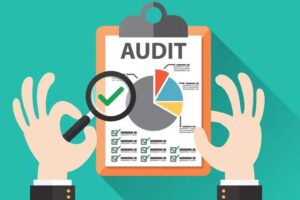Risk Based Maintenance (RBM) Techniques, Strategy, and Applications
Course Fee:
RBM techniques, strategies, and application course will assist the trainees in accomplishing the following objectives:
• Comprehension of the RBM, its methodology, and application of the RBM program
• Development of effective strategies as per the unique environment
• Understand the participation of the RBM in maintenance and effective performance
• Apprehension of the risk and its role in developing plans
• Understanding the failure, its probability, system behaviour during failure, and effects of failure on the risks
• Selection of the correct technology as per the unique situation
• Proper and effective integration of RBM with other techniques such as RBI and PFA
• Usage of Key Performance Indicators in order to perform
• Tips and tricks for the best application of the RBM
• Developing an action plan using RBM and ensuring that RBM is best utilized for the sake of management of assets
Course Content
Introduction to RBM
• Define RBM.
• Importance of RBM
• Benefits of the RBM
• Background of RBM
• RBM in old times and advancements in the present era
The Depth of Risk in Maintenance
• Define risk
• How is it helpful in maintenance?
• Different types of risks
• Identification of the risk
• Risk analysis in terms of maintenance
• In-depth understating of the risk
Maintenance and Reliability
• Effects of maintenance on the business
• Reference plan of maintenance
• Depreciation of assets
o Reasons of failure
o Basic types of failures
o How to improve asset-life?
• Management of the assets to realize assets value
Some Common Engineering Tools
• The RAMS
• Cost and benefits decision (the threshold for maintenance)
• The risk matrix
Strategies
• HI-HP
• LI-HP
• HI-LP
• LI-LP
• Monitor
• Run to Failure
RBM Attributes
• Learning curve
• Risk Assessment
• Balance creation of the Consequence of Failure (CoF) and Probability of Failure (PoF)
Techniques
• Criticality (Risk) Analysis
• FMEA
• FCA
• Event Tree Analysis
• Fault Tree Analysis
• Important concepts to understand for techniques
o Asset Utilization Index
o Asset Strategic Importance
o Criticality Matrix
Implementation
• Seven steps of RBM while integrating with FMECA
• Patterns of failures
• Identification of maintenance tasks and frequencies
• Weibull distribution
Other Important Implementations
• Use of decision support tools for optimization of maintenance tasks and frequencies
• Some equipment-oriented tasks:
o Monitoring of the condition
o Testing and inspection
• Predictive maintenance technologies
Integration with Other Technologies
• Integration of the spare parts, facilities, and tools
• Interaction with maintenance workflow
• Integration with Risk-Based Inspection (API 580)
• Interaction of RBM with Potential Failure Analysis (PFA)
Plan and Procedures
• Optimizing maintenance tasks
• Developing an action plan unique to different situations
• Improvement of the plans through continuous data monitoring
Key Performance Indicators (KPI)
• What are the KPIs?
• Why the KPIs are important?
• What are the benefits of KPIs?
Review and Implementations
• A brief review of the crucial topics
• Implementing important training topics
Methodology
The training methodology integrates lectures, interactive discussions, collaborative group exercises, and illustrative examples. Participants will acquire a blend of theoretical insights and hands-on practical experience, emphasizing the application of learned techniques. This approach ensures that attendees return to their professional environments equipped with both the competence and self-assurance to effectively implement the acquired skills in their responsibilities.
DATE:
1ST BATCH: 10th – 13th , Mar 2026
2ND BATCH: 30th Jun – 3rd Jul, 2026
3RD BATCH: 27th – 30th Oct, 2026
Course Category
- Human Resource and Admin
- Finance and Accounting
- Internal Audit and Fraud Control
- Stores, Procurement and Supply Chain
- Information Technology
- Aviation and Maritime
- Banking, Investment and Insurance
- Business Communication
- Construction Management & Civil Engineering
- Engineering, Instrumentation and Maintenance
- Entrepreneurship and Business
- Hotel & Hospitality Management
- Law and Contract Management
- Management and Leadership
- Project Management
- Public Relations
- Public Sector
- Sales, Marketing & Customer Service
- Secretaries & Personal Assistants
- Transport & Logistics
- Security and Safety
More Courses
VENUE
25, Queen street, Alagomeji Bus Stop, Yaba, Lagos









